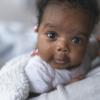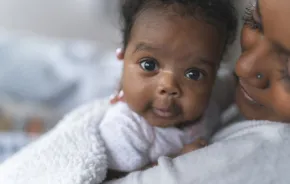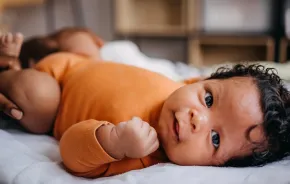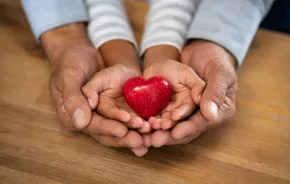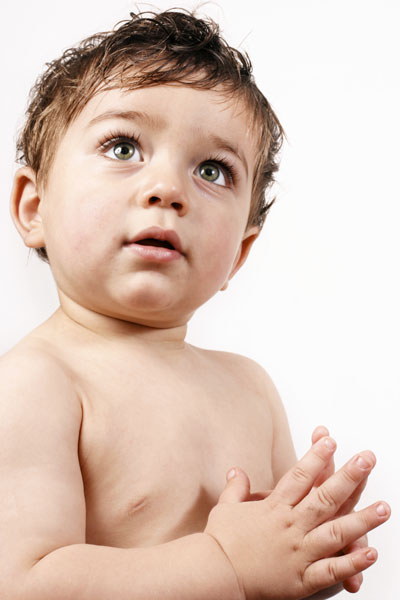 Whether you’re a parent or researcher, everyone agrees: Babies are amazing! “They’re these little geniuses who have a lot to share,” says Sarah Roseberry. Roseberry is an outreach specialist at the University of Washington’s Institute for Learning and Brain Sciences (I-LABS), which studies brain development during the first five years of life.
Whether you’re a parent or researcher, everyone agrees: Babies are amazing! “They’re these little geniuses who have a lot to share,” says Sarah Roseberry. Roseberry is an outreach specialist at the University of Washington’s Institute for Learning and Brain Sciences (I-LABS), which studies brain development during the first five years of life.
I-LABS is consistently on research’s cutting edge, collaborating with institutions around the world to study cognitive, language, social and emotional development, and more. “We know more about infants than ever before, but there is still a lot to learn,” says Roseberry.
I-LABS findings contribute to the general pool of scientific knowledge, but also have everyday applications, such as early intervention for at-risk babies and supporting parents in their daily decisions.
These four studies, conducted during the past year by I-LABS and partnering institutions, represent some of the newest and most exciting research available.
Prenatal language development
Babies are better listeners than you may think. It’s long been known that babies begin hearing during the third trimester of pregnancy, but recent research indicates that they also start categorizing sounds while still in the womb.
Researchers, in a partnership between I-LABS, Pacific Lutheran University and Sweden’s Karolinska Institute, studied prenatal babies in Tacoma and Sweden. Using English and Swedish sounds, they found that babies began identifying different speech patterns — native language versus foreign sounds — during the last months of pregnancy.
“What we take away from this finding is that babies are learning from the experience of being in the womb,” says Roseberry. “A mother’s ambient environment and what babies hear from inside [the womb] has a profound effect on development.”
The importance of imitation in early childhood
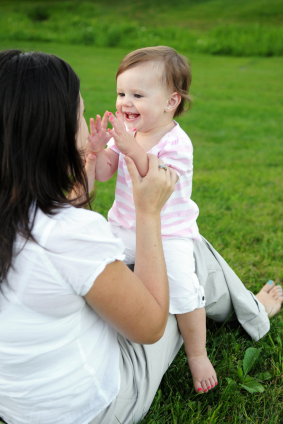 We all know that playing patty-cake is fun. It turns out these baby games may also benefit your baby’s development. I-LABS and Temple University collaborated on a 2012 study that found infants react more strongly when their actions — such as clapping — are mirrored by caregivers.
We all know that playing patty-cake is fun. It turns out these baby games may also benefit your baby’s development. I-LABS and Temple University collaborated on a 2012 study that found infants react more strongly when their actions — such as clapping — are mirrored by caregivers.
In the study, babies were given objects and then performed various actions with them. Caregivers either mimicked the babies’ movements or responded with dissimilar actions. Researchers measured infants’ electrical brain activity and found it was strongest when the caregivers reflected a baby’s behavior.
The research is in its early stages, but may point to mirroring as a step in developing “The babies are learning to make connections between themselves and another person,” says Elizabeth Zack, an I-LABS outreach specialist. More research is needed, but “it’s possible that it relates to a child’s later understanding of empathy,” she says. “The babies recognize that someone else has thoughts, emotions and desires like their own.”
Brain structure in babies
An I-LABS study published last January is the first to link new areas of infant brain structure to language development. Using MRI scans, the white and gray matter of babies’ brains was mapped at ages 7 and 12 months. Higher concentrations in certain areas — the cerebellum (motor function) and hippocampus (memory center) — predicted better language proficiency in 1-year-olds.
“It’s interesting because the cerebellum and hippocampus have not necessarily been known as the language areas,” says Roseberry. “We’re seeing that learning language is a whole-brain function.”
A more comprehensive understanding of brain composition, especially identifying previously unrecognized brain areas that impact language development, may help with early detection of developmental disabilities. More research will indicate if variations are early markers. “It possibly gets us one step closer to identifying children who are at risk, so we can help them earlier in life get back on the developmental path,” says Roseberry.
Children learn by watching
Small children absorb info like sponges. Preschoolers are known to understand basic concepts of cause and effect, such as “If you eat your vegetables, you’ll get dessert.” But a 2012 study by I-LABS and the University of California, Berkeley, indicates that babies as young as 24 months also grasp the cause-and-effect concept.
In the study, 2-year-olds observed researchers press different buttons. Some of these buttons switched on a light. When the babies tried it themselves, they more frequently chose the buttons attached to the light. This indicates their choice was deliberate and based on cause and effect.
“They’re watching and understanding, maybe even before they develop motor skills themselves,” says Zack. “It’s good for parents to realize that babies are picking up more than we ever expected.”
The experiment was also conducted using magnets to turn on the lights, with no adult in sight. The results found that 2- and 3-year-olds learned better by watching a person. “There is something important about having an actual adult present,” says Zack. “The children read the intention that someone is purposefully doing something. It helps reinforce the cause-and-effect part of the action.”
Deanna Duff is a Seattle-based freelance writer who contributes to a variety of regional and national publications. She is a member of the Society of Professional Journalists and the Washington Press Association, which has awarded her writing.
Research rundown on baby brain science
It often takes years to translate scientific research into everyday information. However, many of I-LABS’ recent findings can already be used to help improve common parenting practices. Here are some synopses of recent research:
- Babies not only hear while in the womb, they listen. They can distinguish between native and foreign sounds, which later impacts development. Research cannot yet pinpoint the exact sounds that are most beneficial, but broad stimuli can be positive.
- Interacting with your baby and mimicking her actions increases brain activity and is positive for development. Playing patty-cake, clapping, making faces and sticking out your tongue are both fun and beneficial. These actions help infants feel connected to their caregivers.
- Babies are always observing adult behavior. As early as 2 years old, babies are laying the groundwork to understand cause and effect. Remember that caregivers are role models.
- Babies learn better when in the presence of a caregiver. Children understand more when they interact with an adult and gauge reactions.







